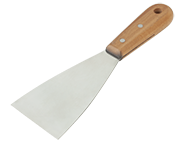|
Doc Hawkins posted:thanks for reading. solar system captivates me for some reason and i thought this was the right thread to babble about mechanics in. It's good! I especially like that it has attributes that didn't immediately make me roll my eyes.
|
|
|
|

|
| # ? May 2, 2024 03:47 |
|
Leperflesh posted:I've been thinking about crafting the last day or so and I think you've hit on one big reason that I very much agree with, but I think there's also a second one. Kamigakari has a simple gear customisation system that relies heavily on monster drops. I'm not sure everyone would readily call it crafting, but it does hit that spot of "no competing alternative to using this system" and it's not obnoxiously complex nor does it ask for character resources (skills, perks, etc) to be invested before you can partake in it. I like it decently enough.
|
|
|
|
mellonbread posted:Nah. "The DM could choose to kill the players using the rules" is true of all games. It's not a real argument. However there are games where an encounter can be built according to the players' level with the guidelines available and the DM will be confident that it will be an even match so they can play it as smart as they can, and there are games where even within those guidelines a DM might create something unbeatable and have to pull their punches to avoid ending the game in an unfair way, and there's plenty of middle ground between the two. I think if a game is very combat focused, "is it easy to know how deadly a combat encounter will be?" is an important metric of game quality.
|
|
|
|
I think it would be badass if you could kill a player with the rules. How would they even convict you? The perfect crime
|
|
|
|
you can, read Dark Dungeons rip Black Leaf
|
|
|
|
Runa posted:If you get a katana from a vending machine people will be very scornful if you don't finish it up and throw it away right there at the nearby proper receptacle. I too have played Yakuza
|
|
|
|
mellonbread posted:Nah. "The DM could choose to kill the players using the rules" is true of all games. It's not a real argument.
|
|
|
|
Whybird posted:However there are games where an encounter can be built according to the players' level with the guidelines available and the DM will be confident that it will be an even match so they can play it as smart as they can, and there are games where even within those guidelines a DM might create something unbeatable and have to pull their punches to avoid ending the game in an unfair way, and there's plenty of middle ground between the two. I think if a game is very combat focused, "is it easy to know how deadly a combat encounter will be?" is an important metric of game quality. However, in a combat-focused game, is knowing the outcome of a combat before actions are even taken actually an interesting thing to be able to do?
|
|
|
|
Just make all combat a 2d6+aggro roll or whatever, problem solved. If you roll a 7 to 9, choose one: * The enemy gets away with something you needed. * You get wounded and use up some of your healing items. * Your brutality shocks and appalls your traveling partners.
|
|
|
|
There's no problem with giving an enemy consumables. Does it make the enemy more powerful? Yes. That's fine though? It'll let you use weaker monsters against higher level players and create unique, novel encounters.
|
|
|
|
Jack B Nimble posted:There's no problem with giving an enemy consumables. Does it make the enemy more powerful? Yes. That's fine though? It'll let you use weaker monsters against higher level players and create unique, novel encounters. If part of building a monster is an "equipment budget" then you can't just make it a gold cost buying off the same list as the player shopping list, or similarly simplistic.
|
|
|
|
Panzeh posted:However, in a combat-focused game, is knowing the outcome of a combat before actions are even taken actually an interesting thing to be able to do? Degrees of success are significantly more interesting than binary pass/fail, so not only yes, but it often actually improves matters. It's like playing an arcade game for high scores instead of just to see the victory screen.
|
|
|
|
Runa posted:If you get a katana from a vending machine people will be very scornful if you don't finish it up and throw it away right there at the nearby proper receptacle. Katana, schmatana. https://www.nbcphiladelphia.com/news/local/philly-woman-sentenced-to-at-least-20-years-for-killing-man-with-knife-hidden-in-a-cane/3832046/ The headline buries the lede. She is 70 years old. Philadelphia, y’all.
|
|
|
|
Panzeh posted:However, in a combat-focused game, is knowing the outcome of a combat before actions are even taken actually an interesting thing to be able to do? Hey, now, hey now, no need to take nuance behind the shed and mercy-kill it. We are talking about a genre of games where the outcome of a combat encounter is not just pass/fail like Tuxedo Catfish points out. It goes further than that, even the degrees of success, the details of the outcome are still largely expected to fall within a narrow band of variance. You expect player characters to win most fights, but you also expect the cost / threat to them to be such that they don't accrue large numbers of character deaths per encounter. To clarify, I think 0.2 would be a very large number per encounter. You expect to largely pay your "overcome combat tax" in regularly replenished resources like %health, actions, daily power uses and more or less affordable consumables. The bedrock conventions (one character per player, emotional investment in character's narrative and mechanical development, regularly occurring, lethal fights etc) of the genre conspire to make completely unbounded outcomes of combats run counter to the desired and expected experience for this fun group activity. That's not to say you can't have fun with high body count TTRPGs, but that's a different genre.
|
|
|
|
Griddle of Love posted:Hey, now, hey now, no need to take nuance behind the shed and mercy-kill it. Fair, though i think this way of doing things definitionally means, you have to rely a lot on attrition to do most of the consequences for you- 5e's combat design kinda requires lots and lots of combats between rests, an impractically large quantity, to really work and provide much tension, because danger to the PCs is not really one of levers to work with. And in all honesty, since there's a baseline of time needed to handle a combat, it's eminently impractical to do six or seven fights between long rests. Given most peoples' pace of play, that number can practically be a lot closer to one to two. So in the end you're kinda stuck with the PbtA option, where you just settle combat with one roll and move on with your life, but then there's not much nuance to be had there, not much of a chance to express your combat. This may be because i was playing in a GURPS twilight 2000 game where the players made a poor decision to fight 16 Polish borderguards with 6 guys on the player side, four of whom had Reluctant Killer which made them almost useless, but somehow the players pulled it out, killed seven of them and took the field. And I think they almost subconsciously assumed that the borders of the map were an invisible wall and they had to fight these sixteen guys. It was an interesting encounter in and of itself, but it would be less so if it was strictly limited to encounters that the party could comfortably handle without casualties, where i'd have to make every patrol be like four guys who are always surprised because the PCs and companions are MI geeks and not hard-core special forces or even infantry.
|
|
|
|
Splicer posted:The cost to players for using consumables should be lower than the "cost" for monsters to "use" "consumables". It's the kind of thing that goes without saying and why it's so baffling when someone doesn't immediately just intuit it. If I'm understanding you correctly you're saying that, because players have to husband their resources and face continuing attrition as a mechanic, whereas monsters fight and die in one combat and will use every single consumable they're given, those consumables can have a larger impact when placed in the hands of the monsters. So if, for example, both sides have a healing potion, the players might use the potion while the monsters almost certainly will; furthermore if the players do use their potion they've now paid a cost that doesn't exist for the monsters because the monsters are only there to die in that one fight. That's all true as far as it goes, and it's fine to point that out as something to consider. Nevertheless, if I judge that the enemies can have and use an item, then I've considered the whole context and I'm making a well reasoned, sound decision. I understand how it changes the encounter and it's a change I'm doing intentionally, on purpose, as part of my encounter design. I mean, I could just make up a monster, and I could give it a one time use power; a consumable isn't much different other than 1) the players might obtain it 2) it adds a bit of flavor to the world by suggesting that clever enemies work in the same systems and leverage the same resources the players do. Maybe you're not actually arguing that consumables for the enemy have no place in encounters, and you're only pointing out how they're balanced differently for enemies, in which case I apologize for misunderstanding, but if you think that it's not something that other GMs can understand or balance I think you're just, what, assuming incompetence?
|
|
|
|
Thanlis posted:Katana, schmatana. Zatoichi lives!
|
|
|
|
Jack B Nimble posted:I mean, I could just make up a monster, and I could give it a one time use power; a consumable isn't much different other than 1) the players might obtain it 2) it adds a bit of flavor to the world by suggesting that clever enemies work in the same systems and leverage the same resources the players do. The argument is that this game has the GM make the enemies in the same way as the players make a PC... which means, according to that principle, a given enemy will have the same amount of equipment, including consumables. So while a GM can choose to lower the amount of consumables, they're deviating from the guidelines. In other words the game's rules and guidelines ought to do as you suggest and actually tell GMs to balance encounters by not building NPCs exactly the same as PCs. IMO there's an alternative, which is to build a game where NPCs don't always or even usually fight to the death, just as PCs usually don't. If your PC party would, upon running out of potions and heals, attempt to withdraw, so should the NPCs: their consumables ought to be a resource they pay attention to and get very very alarmed when they run out of. The baseline "enemies are there to die" presumption is actually what's undermining the "enemies are built like PCs" rule's balance.
|
|
|
|
What's the problem with building enemies the same as PCs? Are you assuming that the enemies are ALSO the same level, or as numerous, as the PCs? I'm reading what you're saying and it's like you're leaving this implication that it's unbalanced or wrong without saying why? I can see you describing the way the encounters are built, but I don't see what the problem is? I'm not loving with you, and I'm not trying to be dense; could you maybe describe an example combat that illustrates why this is bad? As a counterpoint, I don't think the issues from the original encounter, with the mage ambushed by an invisible creature, are a problem that comes from monsters using potions, it sounds more like the possibility of invisible creatures wasn't signaled, it took the mage by surprise and one shot them, and that felt cheap and frustrating to the player? Edit: I think I see what I didn't get earlier. Fundamentally I don't think: "Enemies and Players use the same powers, skills, items, etc" Also means: "Enemies are as well skilled and equipped as players." Jack B Nimble fucked around with this message at 17:08 on Apr 16, 2024 |
|
|
|
Jack B Nimble posted:What's the problem with building enemies the same as PCs? Are you assuming that the enemies are ALSO the same level, or as numerous, as the PCs? I'm reading what you're saying and it's like you're leaving this implication that it's unbalanced or wrong without saying why? I can see you describing the way the encounters are built, but I don't see what the problem is? I think I've lost track of what system this discussion was about at this point. Was it PF1? Usually the objection to "building enemies the same as PCs" is more about work for the GM than balance. Of course in 3.5/PF1 it was also unbalanced, but that's mostly because the options for PCs were unbalanced. Though in point-buy systems like GURPS, there really is a balance problem with building enemies as PCs, in part because there's no siloing of combat options from noncombat ones. Which is why GURPS tells GMs not to treat point-cost as a measure of combat threat when building NPCs, though IIRC it doesn't give much advice for how you should estimate the threat level of a combat-oriented NPC.
|
|
|
|
Silver2195 posted:I think I've lost track of what system this discussion was about at this point. Was it PF1? The initial anecdote was PF1, a system that'd I'd argue just relies on the GM judging combat balance themselves anyway because the listed CR can be quite inaccurate. If we view it more broadly, I both ran and played in a decade or so of Fantasy Flight 40k RPG games, a system where you fight a lot of enemies built using the same rules as the player, and it worked perfectly.
|
|
|
|
I think a related issue is that stealth for NPCs has the same problem. As it plays out at the table, the experience is quite different for the two sides.
|
|
|
|
Jack B Nimble posted:The initial anecdote was PF1, a system that'd I'd argue just relies on the GM judging combat balance themselves anyway because the listed CR can be quite inaccurate. I think there's also a difference in "what does equipment do" in different games. In a fantasy game where characters can have potions/scrolls of healing, teleport, kill everyone, etc. that's potentially a little bit different than a system where characters and NPCs have armor and guns. The issue with a D&D-alike is basically this: enemies with one-use items that significantly change how strong they are. An enemy with 20 hit points who can heal them all with one action actually has 35+ hit points, if we assume they use it when they're down to nearly zero. An enemy with a single-use scroll of teleportation will play nearly identically to an enemy who has teleport on their spell list. In an RPG' character mechanics, PCs generally get a scroll of teleport or a potion of healing much cheaper then they get functionally unlimited teleports and healings (in D&D that's limited by rests, which are in turn more-or-less functionally unlimited, with situational exceptions). If you tell the GM to build NPCs using rules that give them single-use items cheaper than unlimited-use abilities, then those enemies are stronger by just giving them the single-use stuff. Your enemy-balancing guidelines need to take that into account, regardless of system and setting. If they do, then yay, I'm happy.
|
|
|
|
It's a good dynamic to unpack, absolutely. Like, if you WANT the enemy to effectively have 35+ HP, this is a way to get there. You definitely don't want, say, to take an already balanced encounter from a published adventure and then relocate the treasure onto the final boss's equipment so that they start using it all during the climactic fight. That would be a pretty extreme example of getting it wrong.
|
|
|
|
Jack B Nimble posted:If I'm understanding you correctly you're saying that, because players have to husband their resources and face continuing attrition as a mechanic, whereas monsters fight and die in one combat and will use every single consumable they're given, those consumables can have a larger impact when placed in the hands of the monsters. So if, for example, both sides have a healing potion, the players might use the potion while the monsters almost certainly will; furthermore if the players do use their potion they've now paid a cost that doesn't exist for the monsters because the monsters are only there to die in that one fight. And that's ignoring that in the first fight the players get to walk away with a magic weapon afterward. Jack B Nimble posted:in which case I apologize for misunderstanding, but if you think that it's not something that other GMs can understand or balance I think you're just, what, assuming incompetence? Gort posted:Consumables are a bit bullshit when used by monsters. When a player uses one, that's a resource they won't have for the other hundred fights in the campaign. A monster's only going to show up in one fight, so giving them consumables of an equal value to the permanent magic gear they could have had and having them use them all in the fight makes them much more powerful than they ought to be. mellonbread posted:Part of Pathfinder's premise is that the rules are basically symmetrical between players, NPCs and creatures, meaning the monsters can carry and use consumable items that change the course of an encounter. It's good to produce an unexpected and memorable result now and again, you don't always need to follow a predictable power curve of how tough the monsters "ought to be".
|
|
|
|
I don't know how much more straightforwardly I can explain it. Pathfinder 1e is a game about simulated tactical combat between the players and monsters. The players can use consumable items, so can the monsters. This will produce outcomes that are unpredictable even within the paradigm of supposedly balanced tactical combats. This is fine and part of the game, even if it's unfair or frustrating in the moment. What part is unclear?
|
|
|
|
You know what all this says to me about D&D specifically? 4E supremacy. Level 7 Artillery Read scroll of Teleport. Standard action (does not recharge): Teleport 10. Note: this cannot be used if the monster is grappled, petrified, silenced, or blinded. Level 8 Lurker Sip jug of Invisibility. Recharge 5-6. Minor action. Monster becomes invisible until it attacks or until the end of the next round. Cannot be used if grappled or petrified. Level 5 Brute (could be a soldier but your players will throw things at you for making the combat last that long, and they'd be justified) Chug potion of healing. No recharge. Immediate reaction when bloodied. Gain (25% of max HP -- I.e., a healing surge's worth) temporary HP. Cannot be used if grappled or petrified. Then just build the monster encounters with these powers (which I would define better if I weren't 10 years out from playing 4E), subbing out either equivalent singletons or bundles of powers from the stock monsters for these. Now your enemy rogue has a flask of several potions of invisibility (somehow, no matter what, only e.g., 2 will be left at the end of combat), they're sneaking around and backstabbing PCs, but no one feels like they're getting screwed by NPCs using magic items.
|
|
|
|
Admiralty Flag posted:Now your enemy rogue has a flask of several potions of invisibility (somehow, no matter what, only e.g., 2 will be left at the end of combat), they're sneaking around and backstabbing PCs, but no one feels like they're getting screwed by NPCs using magic items. If the PCs get the same number of potions no matter how quickly they take out the enemy rogue, then arguably the PCs are getting screwed. Though at least it's a more subtle form of getting screwed.
|
|
|
|
I think the only part of this that bears repeating at this point is that Gort pointed out that the GP cost of magic items, when used as a points value for equipping enemies, gets wonky when you start buying potions and scrolls instead of weapons and armor. And that's true, that's a good point. So don't give each of the enemy mercenaries 2k in items with fighter having +1 armor, the archer having a +1 bow, and the mage having a dozen scrolls. Don't do that and think they're all the same, because they're not! How likely someone is to make that mistake I have no idea, but we were all dumb as bricks high school DMs at some point. And if your answer is just "the fights can be unbalanced and that's OK" then yeah, sure. But don't do the above and be mislead into thinking it's all of a piece.
|
|
|
|
Silver2195 posted:If the PCs get the same number of potions no matter how quickly they take out the enemy rogue, then arguably the PCs are getting screwed. Though at least it's a more subtle form of getting screwed. (* OK, in some weird corner case where a rogue with a high enough arcana score was lurking right behind the wizard, recognized he was about to cast teleport from a scroll, and unloaded her daily along with her minor action attack (was it low slash?) and did enough damage to kill the wizard, it would be pretty tough not to let the party take the scroll. But that's a corner case.)
|
|
|
|
part of 4e's construction is that NPCs are not "the same as" PCs, and that for example means that you don't just presume an enemy wizard is following the same magic rules as a PC wizard. You don't get to try to suss out their class and then draw conclusions about how they work. Like oh that bad guys' a ranger and he has an animal companion that is Large, he must be at least X level and have Y hit points and watch out he can cast Z. If you want to have a magic tradition in your 4e setting that says wizards of such and such tradition all memorize their spells and a wizard of the ninth rank would know these ten spells then OK, the GM can intentionally build an enemy that fits those parameters. But there is no such constraint in the rules and so the players don't and shouldn't meta-game their way into thinking they know what an enemy will do based on character construction rules. This is cool, and good, actually. e. and it means that if a bad guy uses teleport in an encounter you can describe it as them quaffing a potion or using an item or just wiggling their fingers, and the players can find or not find more such things on their corpse later, and there's no apparent fudging by a GM. What is weird is all those other games where you find loot on a bad guy and you're like, why the gently caress didn't they use this in this fight in which they just died? This guy had a healing potion, we downed him in four rounds, in the third surely he'd have drank the drat thing?
|
|
|
|
i don't think that monsters and players should have the same spells because i gm and that's a pain in the rear end
|
|
|
|
Leperflesh posted:part of 4e's construction is that NPCs are not "the same as" PCs, and that for example means that you don't just presume an enemy wizard is following the same magic rules as a PC wizard. You don't get to try to suss out their class and then draw conclusions about how they work. Like oh that bad guys' a ranger and he has an animal companion that is Large, he must be at least X level and have Y hit points and watch out he can cast Z. i mean this is sort of a two steps forward, one step back thing in that it actually would rule for there to be some commonly accepted shorthand for communicating a monster's capabilities to the PCs without just lecturing them, especially in diegetic terms -- it just probably shouldn't be based on PC class  LANCER mandates that you tell players every NPC's class and templates regardless of how you're fluffing them and there are relatively few enough of them that it's practical to learn to recognize them all over the course of a campaign
|
|
|
|
Ominous Jazz posted:i don't think that monsters and players should have the same spells because i gm and that's a pain in the rear end yeah! I always thought it constrained the world in a bad way. Player choices have to be constrained for considerations like party balance and character level and playability. But there's stuff you can have the bad guys get or just be in the world. Players don't have to be able to access every possible thing that exists, and actually it's more fun if there are surprising magics in the world that they've never heard of, even if they read the whole spell list in the PHB. Tuxedo Catfish posted:i mean this is sort of a two steps forward, one step back thing in that it actually would rule for there to be some commonly accepted shorthand for communicating a monster's capabilities to the PCs without just lecturing them, especially in diegetic terms -- it just probably shouldn't be based on PC class I think in 4e you can reasonably communicate things like "these guys are minions" and "this guy is an elite" and that's probably important to do. And as a matter of play, I totally did things like mention what sorts of equipment the PCs can see (those guys are carrying nets!), how they behave "that one guy with all the charms and trinkets is mumbling to himself and the ones standing right next to him seem very nervous" and so forth. Leperflesh fucked around with this message at 20:55 on Apr 16, 2024 |
|
|
|
Jack B Nimble posted:The initial anecdote was PF1, a system that'd I'd argue just relies on the GM judging combat balance themselves anyway because the listed CR can be quite inaccurate. It should be relatively intuitive to judge how tricky a combat you made is likely to be for your players. Obviously player tactics and such are going to have a huge impact but as a general rule you should be able to at-a-glance whether or not you're going to see a turn one TPK. How the rest of the system works has a huge impact on all of this. If players fully heal up and replenish all their resources between fights then slamming four redline fights at them in a row is as difficult as one. If there's carryover in the form of resource depletion (HP, spells, consumables etc) or persistent wounds or whatever then two redline fights in a row is probably going to kill them. And that's just one simple example, we're not getting into the really esoteric stuff like "does the system push player investment in individual characters". Whether you view the D&D 3.x encounter construction advice as a budget (spend XX to make a fight that will wreck YY% to ZZ% of their poo poo, assuming they don't do something especially stupid or clever) or a metric (the fight you have created is of strength XX, this means it will wreck YY% to ZZ% of their poo poo unless they don't do something especially stupid or clever), if those encounter guidelines exist then they should, you know, not suck. D&D 3.x has encounter guidelines, but they're utterly garbage. Using the same cost metric for "how much should it cost a player to buy X vs Y" and "how much should it cost a monster to buy X vs Y" when X is a consumable and Y is not in the context of a game where consumables have different inherent values for players vs monsters is genuinely worse than not having any guidelines at all. Due to <incredibly long list of system and setting assumption differences here>, none of this applies to FFG 40k. Or maybe it does, I don't know FFG 40K well enough to comment. To give a non-D&D example I do know pretty well, All Flesh Must Be Eaten didn't distinguish between setting and combat Zombie abilities in its guidelines. So "an instinctive desire to destroy infrastructure" contributed just as much to encounter metrics as "can lift a truck and throw it at you".
|
|
|
|
mellonbread posted:I don't know how much more straightforwardly I can explain it. Pathfinder 1e is a game about simulated tactical combat between the players and monsters. The players can use consumable items, so can the monsters. This will produce outcomes that are unpredictable even within the paradigm of supposedly balanced tactical combats. This is fine and part of the game, even if it's unfair or frustrating in the moment.
|
|
|
|
Leperflesh posted:yeah! I feel like "players don't have to be able to access every possible thing" and "there are surprising magics in the world that they've never heard of" are two different things. At the very least, rolling high enough on an Arcana check should give you some idea of how the enemy spellcaster's powers work, right? Or am I missing the point?
|
|
|
|
if a player stuns my monster i'm gonna be having four other doing the thing if i stun a player they're just gonna be hanging out
|
|
|
|
Splicer posted:Oh I perfectly understand what you're saying, much like I perfectly understand what someone is saying when they tell me that NASA's actual remit is murdering people who get too close to the great ice wall that stops the oceans falling off the Earth's edge.
|
|
|
|

|
| # ? May 2, 2024 03:47 |
|
Not missing the point exactly. There wouldn't be anything wrong with letting the party roll arcana to figure out what an enemy monster is doing, but the answer can always be like "some foul hobgoblin incantation that summons dire snakes" or whatever, instead of just "Conjure Animals (3rd level)" especially if it's going to work differently in some way.mellonbread posted:I don't know how much more straightforwardly I can explain it. Pathfinder 1e is a game about simulated tactical combat between the players and monsters. The players can use consumable items, so can the monsters. This will produce outcomes that are unpredictable even within the paradigm of supposedly balanced tactical combats. This is fine and part of the game, even if it's unfair or frustrating in the moment. I mostly just don't get how that's different than any other D&D-adjacent dungeon crawlfest with a monster manual and a potion list. Was there something special in D&D 3.x that precluded an orc from chugging a potion? It just feels like you're slapping the roof of a car and saying "Yessir, this baby has the hottest new thing, wheels!"
|
|
|



























